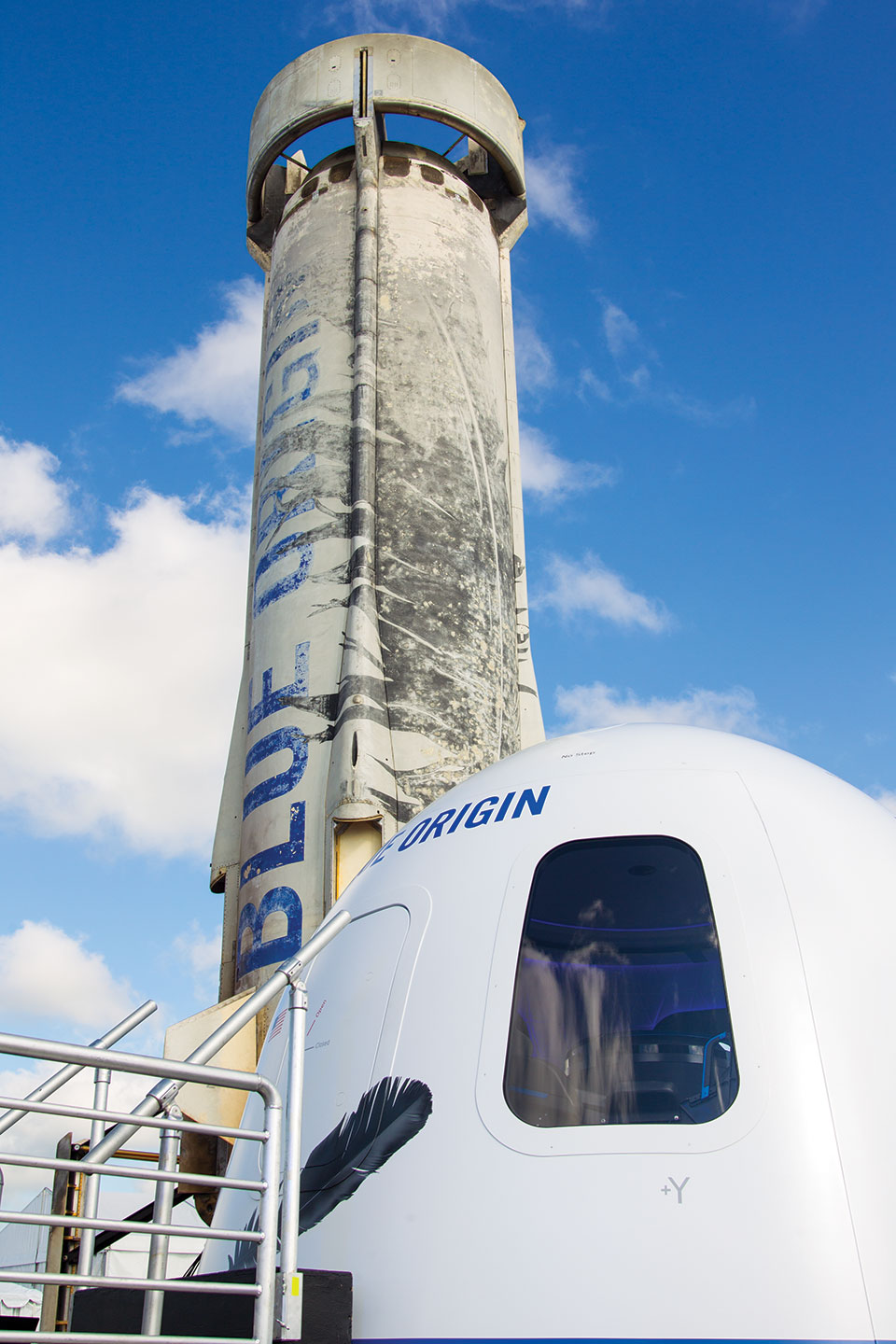Your Ticket to Space Tourism Is Almost Here
Blue Origin’s New Shepard set to offer suborbital flights
By James Wynbrandt
July 25, 2017 - EAA AirVenture Oshkosh 2017 welcomed a visitor from outer space!
Towering over the massive airframes covering Boeing Plaza and looking more like an industrial smokestack than an advanced aerospace vehicle stands the New Shepard, the first rocket to ascend above the Karman line (the boundary between Earth and space 100 km, or some 62 miles, above sea level) and return to Earth for a successful vertical landing. While at the fly-in, guests can take a simulated suborbital flight of their own in a 1-to-1 scale mockup of the capsule that will launch tourists aboard the spacecraft.
The New Shepard is the reusable vertical takeoff and landing launch system for suborbital space tourism under development by Blue Origin, a company founded by Amazon’s Jeff Bezos. The rocket achieved its milestone first vertical landing on November 23, 2015, and after minimal refurbishment the same booster made four subsequent flights in 2016, the last of which happened in October. This is the first public display of the New Shepard.
However, suborbital tourism is only the beginning of Blue Origin’s plans. “Our vision is to have millions living and working in space,” said Ariane Cornell, the company’s head of astronaut strategy and sales. “The first step is to bring down the cost of access, and for that you need reusable rockets.”
The BE-3 liquid oxygen-hydrogen engine powering the 55-foot-tall rocket booster develops 110,000 pounds of thrust but is able to fully throttle down to 20,000 pounds of thrust, enabling soft, upright landings. Ariane said the rocket can be inspected and refueled for “the low tens of thousands of dollars” and turned around in 24 hours, allowing a daily flight schedule.
The six-person capsule features six large windows that will give all occupants a spectacular view and be the largest ever flown in space. A small monitor by each of the reclining seats displays flight data and a backward view of Earth during ascent and descent. The booster separates from the capsule at an altitude of about 75 km, and the capsule continues its ascent, providing about four minutes of weightlessness before passengers get back in their recliners for the descent. The entire flight will last about 11 “life-changing” minutes, Ariane said.
Actual tourist flights could begin “in the next year or two,” Ariane said. Meanwhile, Blue Origin is developing New Glenn, with plans to eventually offer orbital flights to tourists.
Meanwhile, back on Earth at AirVenture, Blue Origin is hosting a welcoming event at the New Shepard on Friday at 12:30 p.m. The first 1,000 visitors will receive exclusive Blue Origin memorabilia.

